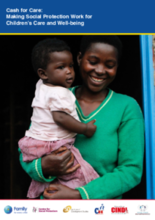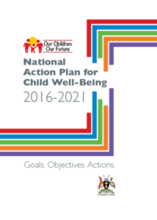Displaying 941 - 950 of 1593
This is a report from the International Institute for Child Rights and Development (IICRD) examining the two year (2014-2016) Child Protection Social Cohesion initiative in Burundi and Chad.
While there is a good amount of trafficking research that focuses on Africa, much of the research has greatly neglected child trafficking and its traits within the borders of a particular country. The goal of this article is to take stock of the child trafficking situation within Madagascar’s borders. This article examines the impact of supply-and-demand factors on child trafficking in Madagascar and discusses the approaches that should be used in the implementation of anti-trafficking policies.
Family for Every Child, in partnership with the Centre for Social Protection at the Institute for Development Studies, just announced the launch of its Cash for Care: Making Social Protection Work for Children’s Care and Well-being Report.
According to the Rwanda National Commission for Children, 2294 out of 3323 have obtained foster families through the "Keeping Children in Families" program.
Rwanda’s "Tubarere Mu Muryango (TMM)," program, which translates to "Let's raise children in families" has placed over 2000 children in foster families.
This country care review includes the care-related Concluding Observations adopted by the Committee on the Rights of the Child.
This book published jointly by FAO, UNICEF, and Oxford University Press presents the findings from evaluations of the Transfer Project, a cash transfer project undertaken in the following sub-Saharan African countries: Ethiopia, Ghana, Kenya, Lesotho, Malawi, South Africa, Zambia, and Zimbabwe. It concludes that cash transfers are becoming a key means for social protection in developing countries.
This study explores the relationship between orphanhood prevalence, living arrangements and orphanhood reporting.
In this study, the researchers analyze how HIV contributes to the phenomenon of child-street migration in Kenya.
In this National Action Plan for Child Well-Being, Uganda spells out goals, plans, and actions it needs to take to improve child well-being in Uganda. The document points out that 62 percent of persons living in poverty are children. It notes that 33 percent of children under 5 are stunted, and it further states that only 37 percent of children make it to secondary education.





